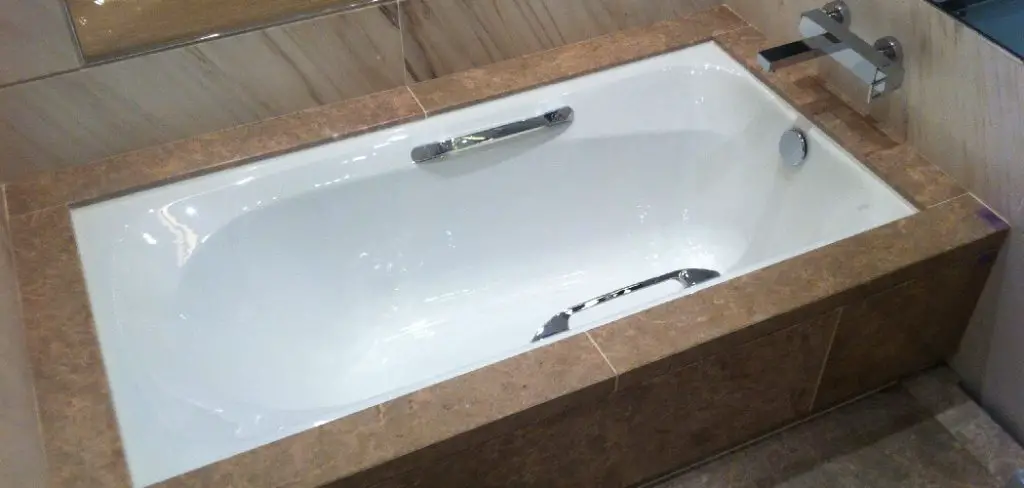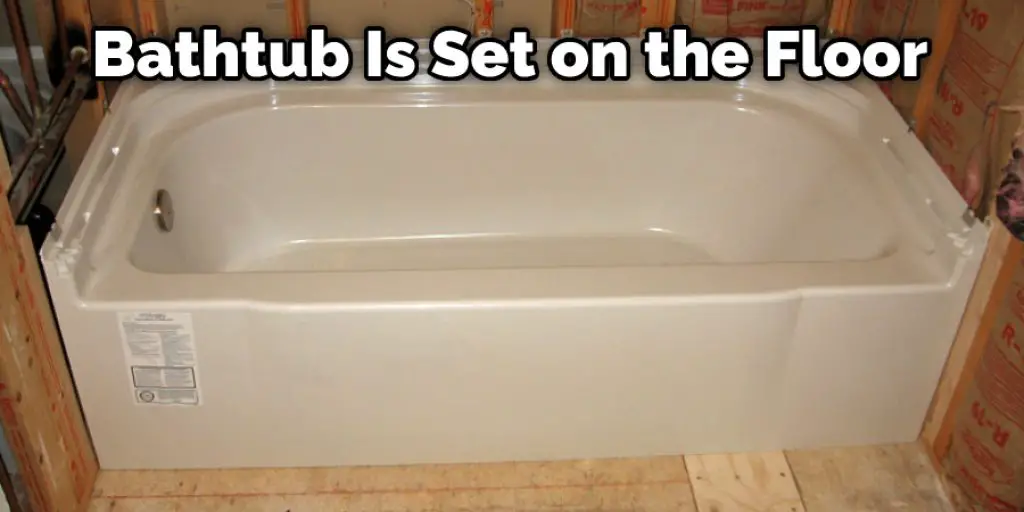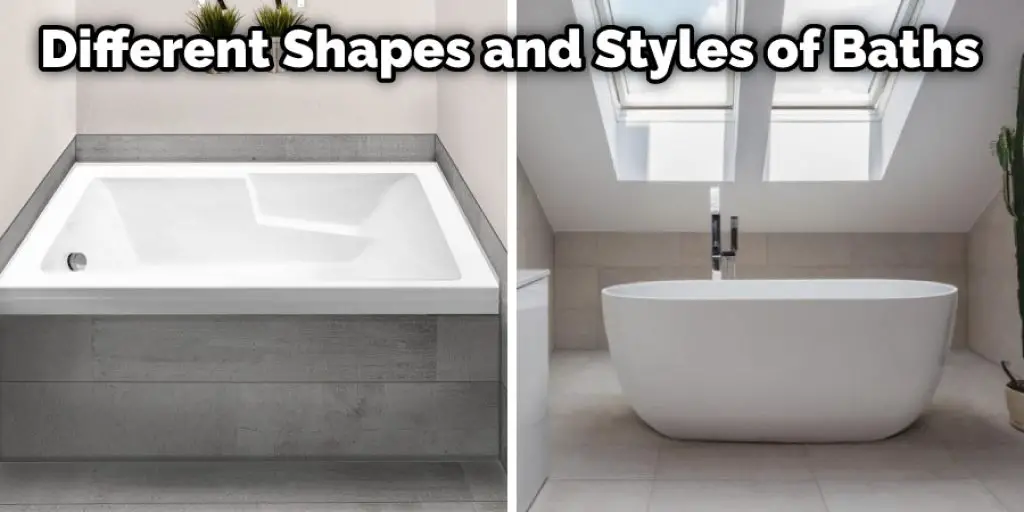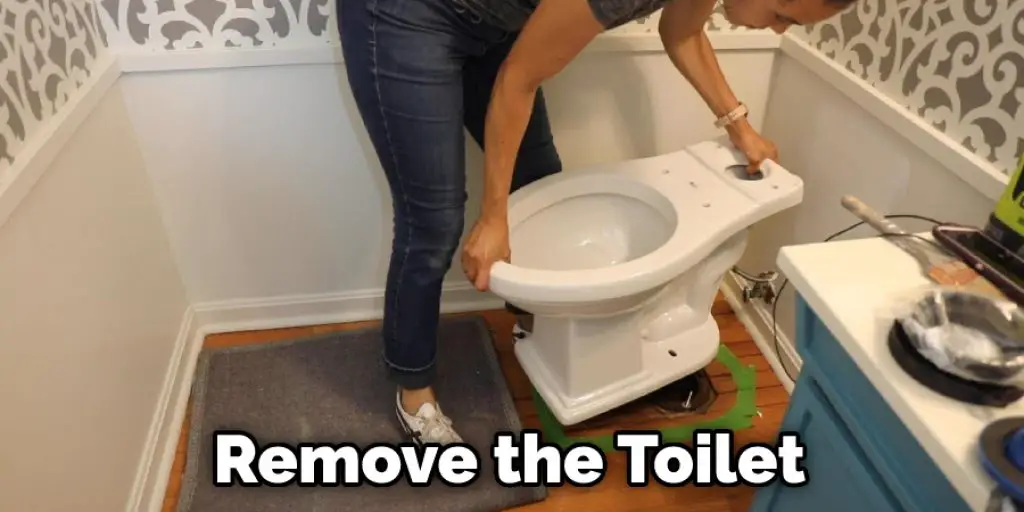When you are looking to buy a new bathtub, one of the first things you need to do is measure the size of your current bathtub. This will ensure that you get a bathtub that is the right size for your bathroom. This blog post will show you how to measure bathtub size.
We will also provide tips on choosing the right bathtub for your needs. So, if you are thinking about buying a new bathtub, make sure to read this blog post! This guide will help you measure the dimensions of your bathtub so you can find the perfect fit. So read till the end of this blog post.

Different Types of Bathtub and There Variation in Style
1. The Freestanding Bathtub
This type of bathtub is a stand-alone tub that is not permanently attached to the bathroom floor or wall. Instead, these baths usually have a pedestal at the bottom, giving them adequate support. While they are usually more expensive than other tubs, these offer great value for money in terms of comfort and luxury. In addition, they are convenient since they are freestanding, which means that you have the freedom to place them anywhere around your bathroom.
2. Alcove Bathtubs
This type of tub is usually recessed into the wall. Its benefit lies in its ability to save space, making it a great choice for smaller bathrooms. The downside to this is that if water spills or leaks from the faucet during use, you have no place to contain the water because it will simply drip down onto your bathroom floor.
3. Slipper Bathtubs
These are also known as Eurotubs, and they are similar to alcove tubs except that they appear even smaller because of their shallow depth. This type of bathtub is perfect for bathrooms with low ceilings or where you want to free up some space by installing a smaller tub.
4. Drop-in Bathtubs
This type of bathtub is set on the floor, and it usually has a wooden frame to give it its shape. They are easy to install and clean, but they may require some modifications during installation because of their unique design. The downside to this is that it makes them not ideal for small bathrooms since you will be sacrificing a lot of floor space.

5. Undermount Bathtubs
This kind of tub is fitted underneath a countertop. It usually has a lip or flange around its border, which makes it so good at hiding unsightly seam lines. This also makes it a great choice for double bathroom sinks since they can both share the same space. However, if you want to have some storage underneath the tub, this will not be possible with an undermount unit.
6. Oval Bathtubs
Like round tubs, oval bathtubs are also great for taking up space since they have a larger footprint than the other tubs. Some people can indeed find them to be too big, especially if you have a small bathroom. However, these are usually around five feet in length and four feet wide, which makes them perfect choices for large bathrooms.
7. Whirlpool Bathtubs
These baths incorporate a jetted tub with a standard bathtub, which gives them a futuristic look. This is usually combined with a shower and faucets to maximize the space inside your bathroom. These things make this type of tub ideal for large bathrooms since they offer many options in one unit. More importantly, their design makes them very functional since you can use the same tub for bathing and relaxation purposes.
Six Factors to Consider When Measuring Your Bathtub
1. Size
When it comes to size, this is usually determined by the length and width of the tub. Though not always, this will help you determine what size or shape of a bathtub to look for when searching through the options.
2. Shape
Though there are quite a few different shapes and styles of baths these days, most shapes can be broken down into two main types: Rectangular or oval. Rectangular tubs are usually longer and skinnier, whereas oval ones are shorter and more rounded. There are also circular baths that don’t have many shapes to them at all, but they’re a bit harder to come by and a little pricier.

3. Material
Some common materials for bathtubs include porcelain enamel steel or fiberglass, but other options are also available. Fiberglass is the most popular because it has many benefits that make it unique among other types. For instance, it is more lightweight than steel and doesn’t rust or corrode. It is also available in various colors, shapes, and sizes that porcelain enamel can’t match. Other materials include acrylic (cheaper) and cast iron (heavier).
4. Width
The tub’s width is also important because it will help you figure out if it can fit in your bathroom. Standard bathtub widths are 30″, 36″, and 42″. Most standard showers are around the same widths, though some go as wide as 54″. Shower doors can be bought in many different sizes.
5. Height
This is another important factor to consider when thinking about your new bathtub. Commercial tubs will come in standard heights of 14″, 16″, and 18″. If you’re looking for a perfectly level bath, go with one with the same height as your standard countertops.
6. Length
This will help you determine if the tub can fit in your bathroom. Standard bathtubs are about 60″ long, though if you happen to have a larger bathroom, jacuzzi tubs are also available in 80″ or even 90″. These are usually deeper than standard bathtubs, so they are better for filling up with water.
Step by Step Process: How to Measure Bathtub Size
Step 1: Prepare Your Work Area
Before you start measuring, clear your work area of any clutter and put down a drop cloth where you will be working. This is to protect the surfaces from paint splatters that may occur when using the bathroom.
Step 2: Remove the Toilet
The first step is to remove the toilet. This may be an easy process, depending on your circumstances. It will vary according to whether or not you have a one or two-piece toilet. If you have a two-piece unit, turn off the water line and use a wrench to undo any nuts holding the unit together. If you have a one-piece toilet, it may be necessary to unplug the waterline and remove the bolts holding it in place with a wrench.

Step 3: Remove Any Other Objects in the Way
Remove any other objects that may stand between you and your bathtubs, such as towel racks or soap dishes. These can be reinstalled later.
Step 4: Measure the Tub
Now measure the tub itself. If your bathtub is standard size, it will be around 5 feet long by 2 feet wide, but many different shapes and styles are available today that do not fit into this mold. The most common bathtub is a rectangular shape with feet on the bottom of it. Measure the length and width of this tub to get an idea of how much space is available.
Step 5: Check for Structural Issues
Before you put on the primer, check around the base of your bathtub for any structural issues or water damage. This could lead to the replacement of the tub, so it is best to know about these before you begin.
Step 6: Clean the Tub
Once you have checked for damage, clean the tub thoroughly with a cleaner appropriate for your kind of surface. You want to remove any dirt or grime that may remain after removing the old fixtures. Remember this will be your new bathtub, so it needs to be cleaned before painting.

Frequently Asked Questions
What is the Most Common Bathtub Size?
The most common bathtub size in the U.S. is 36 inches, which is more than double the next biggest tub size at 18 inches. This may be due to the proliferation of dual-sink bathrooms, which allow for two showers or baths to take place at once. In fact, 21 percent of households have a bathtub that is larger than 50 inches tall, and 19 percent have a bathtub that is taller than 66 inches!
Can Two People Fit in a Standard Tub?
Depending on the size and shape of the tub, two people may or may not be able to fit. Generally speaking, if the tub is bigger than the size of the person, it will be difficult for them to fit. If the tub is smaller than the size of the person, they may be able to fit.
What’s the Ideal Soaking Size?
When soaking beans, it is important to remember that the size of the bean will have a significant impact on how much water you need to use. For example, if you are soaking black beans, you would need three times as much water as if you were soaked in pinto beans. The reason for this is that black beans are larger than pinto beans and therefore take up more space in your pot or bowl.
The size of the bean also has an impact on how long they will soak. Soaking white kidney beans overnight will result in them becoming soft and tender while adding almost no flavor; so cooking them with their preferred seasonings before eating is recommended.
Conclusion
Measurements for bathtub size vary, so it is essential to take accurate measurements before purchasing a new tub. To get the most accurate measurement, be sure to measure from one end of the tub to the other and not along the side of the tub. When measuring, consider how much space you need around the sides and front of the tub for ease of access.
There are several standard sizes available for bathtubs, so be sure to choose one that will fit in your bathroom. If your bathroom is small or oddly shaped, there may only be specific sizes available that will work for you. We hope you enjoyed our blog post on how to measure bathtub size, and we’ll be back soon with more helpful advice. Don’t hesitate to get in touch with us if you have any questions or need assistance calculating your tub!








